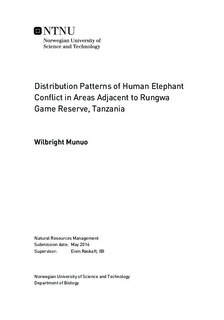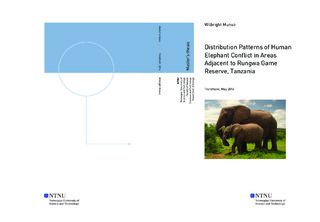| dc.description.abstract | Abstract
Human pressure on terrestrial ecosystems has caused loss and fragmentation of habitats for wildlife species. That has brought humans and wildlife in close proximity intensifying human wildlife conflicts, especially when wild animals with wide home ranges, such as African and Asian elephants, are involved. This study assesses distribution patterns of human elephant conflict (HEC) in areas adjacent to Rungwa Game Reserve (RGR) in Tanzania. Questionnaire survey was used as a tool for data collection from the people around the reserve. Results of the study inferred that, the elephant was a most problematic animal in the area with crop raiding as a prominent conflict. Distance from the villages to the protected area was a major factor affecting distribution of the conflict between humans and elephants, where people in villages close to the reserve were more affected by crop raiding elephants. Other factors are increasing human population associated with immigrants and farming activities close to Rungwa Game Reserve. It was also found that, awareness of HEC mitigations was higher in villages close to the park than in further away villages. However, the mitigation methods were not effective in controlling crop raiding elephants. Thus, application of effective mitigations is very important for sustainable co-existence between humans and elephants. Attitudes of local people were not affected by the effect of crop raiding elephants instead awareness of conservation benefits appeared to have a more important influence on attitudes. Tolerance of costs from problem elephants has its limit, so management of HEC is highly needed. Alleviation of HEC should go together with effective management of PA s, buffer zones, dispersal areas and wildlife corridors. Community-based conservation is among the best options that should be applied as it involves sharing of costs and benefits with local people around the PA s. Much should also be done on improving community based HEC mitigations in areas around RGR. | |

